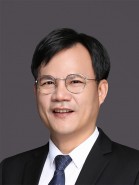
Haoxing Xu Ph.D
Chair Professor
| Doctoral supervisor
Dean, School of Basic Medical Sciences
- 0571-88208284
- haoxingx@zju.edu.cn
-
- Molecular Physiology of Lysosomes